We have extensive experience and expertise in ecology and environment, which are proven by our track record - see Publications of Our Members. Our members undertook and successfully completed consulting and research projects in a variety of areas including:
- Atmospheric environment, atmospheric processes and meteorology;
- Combustion aerosols and emissions;
- Sustainable urban development;
- Climate change and its impacts;
- Renewable energy;
- Coastal erosion;
- Ecological habitats and species conservation;
- Proliferation of pests and diseases; etc.
Below are several examples of ecological and environmental projects undertaken by our members in the past:
Atmospheric Aerosols and Urban Emissions
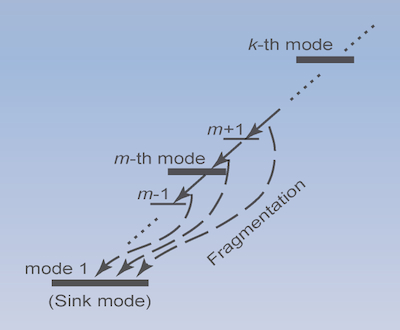 Several studies were undertaken and successfully completed in monitoring, analysis and modelling of atmospheric aerosols, transport and industry emissions, and air quality in the urban environment.
Several studies were undertaken and successfully completed in monitoring, analysis and modelling of atmospheric aerosols, transport and industry emissions, and air quality in the urban environment.
These projects involved atmospheric monitoring and statistical data analysis and modelling of the total number concentration of aerosol particles, particle distributions, background aerosols, dispersion of transport emissions near busy roads and in the urban environment, air quality, aerosol removal methods (including by vegetation barriers and natural sinks), etc.
A variety of advanced statistical methods were developed and used for the analysis of particulate air pollution.
Our extensive expertise and experience in monitoring and modelling of air pollution, emissions, and air quality in the urban environment include:
- Monitoring and prediction of air quality within networks of busy roads;
- Indoor and outdoor exposure to particulate air pollutants and their impact on health;
- Monitoring, evaluations and characterisation of emissions from transport and industry;
- Identification of sources of air pollutants and their dispersion in the urban environment;
- Development of evidence-based recommendations for sustainable development of modern transport, industries and urban environment.
Climate Change
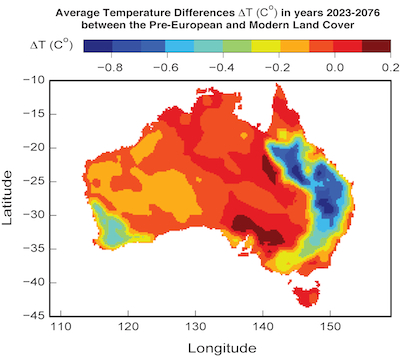 This study analysed climate change predictions over the territory of Australia in the years 2023-2076, caused by the agriculture and crop land cover, compared to the 'would-be' climate change, had the historic land cover by the native vegetation prior to the European settlements been preserved.
This study analysed climate change predictions over the territory of Australia in the years 2023-2076, caused by the agriculture and crop land cover, compared to the 'would-be' climate change, had the historic land cover by the native vegetation prior to the European settlements been preserved.
The data was in the form of fluctuating season-dependent temperature distributions predicted over the Australian territory for the years 2023-2076 under different scenarios of land cover.
We used the surface moving average approach with spatial correlations to determine the average spatially resolved temperatures over the Australian territory. The analysis involved extensive coding on a high performance computer using the Linux platform and R statistical software package. An example of the outcomes is shown in the figure on the left with the 11 discrete temperature variation intervals.
Motivation and Conservation Behaviour
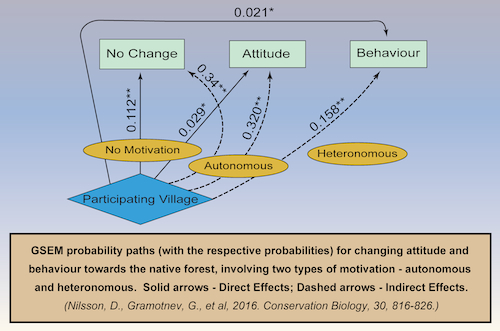 We also studied the roles of heteronomous and autonomous motivations within the local communities in the developing countries towards conservation behaviours with regard to the native forest and endangered species (including Sumatran orangutans in Indonesia).
We also studied the roles of heteronomous and autonomous motivations within the local communities in the developing countries towards conservation behaviours with regard to the native forest and endangered species (including Sumatran orangutans in Indonesia).
Generalised SEM was used to calculate the probabilities of changing attitude and/or behaviour towards the native forest and orangutans. An example of effect paths (for the direct and indirect effects) and the corresponding probabilities of changing attitude and/or behaviour towards the native forest are shown in the figure on the right.
In particular, it was demonstrated that positive changes in the attitude and behaviour towards conservation were most probable in educated males with middle-class income (with about 2 times difference in the probabilities for males and females).
Koala Behaviour at the Edge of Habitat Range
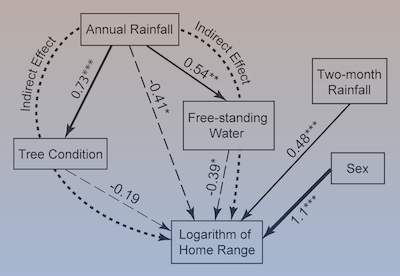
Species conservation is significantly determined by habitat edges where the environmental conditions are typically at the tolerance limit. We conducted the analysis of movement patterns for koalas at the arid edge of their habitats in the South-West Queensland, including typical home ranges for male and female koalas as functions of annual and two-month rainfall, tree condition, and the availability of free-standing water. Generalised SEM was used to determine the network of direct and indirect effects of the considered variables on koala home range (figure on the right).
(Davies, N., Gramotnev, G. et. al., Movement Ecology, 2013, 1, 8).
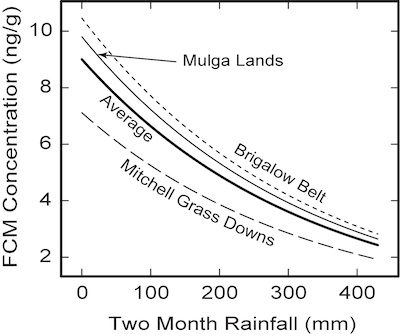
We also studied the relationships between the levels of koala faecal cortisol metabolite (FCM) and environmental factors, and the levels of cortisol in koala fur as a biomarker for prevalence of diseases in the koala population. In particular, it was demonstrated that increasing rainfall in the arid areas of South-West Queensland causes statistically significant reduction in FCM levels (figure on the left) (Davies, N., Gramotnev, G. et. al., PLOS ONE, 2013, 8, e79136).
The ROC regression analysis was used to demonstrate that cortisol levels in koala fur are a useful biomarker with the sensitivity of around 75% (in large primary habitats) for the determination of disease prevalence in the koala populations.


 Please contact us if you need help with any kind of analytical problem or issue that might be related to data evaluation, evidence-based decision making, optimisation or simulation, etc.
Please contact us if you need help with any kind of analytical problem or issue that might be related to data evaluation, evidence-based decision making, optimisation or simulation, etc.